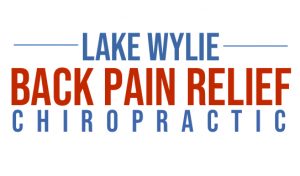Low back pain (LBP) is one of the most common types of pain involving the musculoskeletal system. Its sufferers may sometimes miss work or be unable participate in desired activities or social outings. It can even become so disabling that out of desperation, LBP patients visit the emergency room (ER) in search of relief.
There are many causes of LBP. Some of the obvious include over-lifting/carrying, performing a task for too long or with too many repetitions, and sitting or standing in one position for too long. However, frequently LBP seems to occur for no apparent reason or at least none that can be clearly identified. One of the most basic causes of LBP is simply standing on two, rather than four legs. When comparing a four-legged subject (like a dog, for example) with a two-legged subject (a human), arthritis of the spine and disk degeneration occurs much earlier in those who walk on two legs. This is due partially because 2/3rds of the weight is supported by the low back/pelvis and vertical loading occurs in the two-legged subject whereas the load is distributed between four legs in a horizontal fashion in the four-legged species. Other less obvious causes of LBP include physical characteristics such as flat feet (fallen arches), a short leg resulting in a tipped pelvis, carrying too much weight, being out of shape/weak muscles, and even hereditary factors. Non-physical characteristics include diet, exercise participation, lifestyle, stress, and other psychological conditions such as depression, anxiety, and bipolar disorder. Hence, treatment for LBP must address the entire person, not just the low back since often, several of the characteristics mentioned here are present and may contribute to LBP.
In years past, healthcare providers would focus the majority of their attention on the physical characteristics of LBP and when treatment results were ineffective, blame psychological aspects for which little, if any, treatment was offered. However, over the last twenty years, the shift towards treating the whole person or adopting the biopsychosocial model (bio- = physical, psycho- = mental, and social = how LBP is perceived and affects daily social interaction) has been emphasized as the appropriate approach when managing patients with low back pain. No longer should the psychological aspect be ignored but rather identified and treated so that this significant barrier to recovery can be properly managed.
Regarding treatment, unless someone presents with a “red-flag”—for LBP sufferers, red flags include cancer, fracture (especially unstable fractures), cauda equine syndrome (spinal cord pinching resulting in bowel / bladder control loss), or infection—immediate/emergent care is not required. A careful health history followed by appropriate tests can usually identify these “red flags.” Otherwise, surgery for LBP is not recommended until at least 4-6 weeks of treatment with non-surgical approaches are first utilized and an identifiable “lesion” can be identified that clearly is causing the presenting complaints and clinical findings. In regards to chiropractic care, all the international guidelines published for treating LBP recommend spinal manipulation BEFORE most of the other non-surgical approaches are tried due to medication side-effects and the successes reported in many studies where spinal manipulation is performed on patients with LBP.

